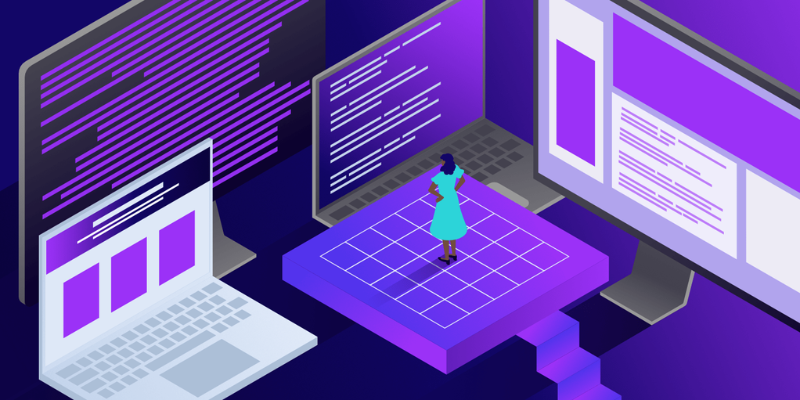Full-stack development has become one of the most sought-after skill sets in the technology sector. It allows developers to work on both the front-end and back-end aspects of web applications. Mastering Full-Stack Development requires a comprehensive understanding of various technologies, frameworks, and best practices. This blog post will provide a step-by-step guide to mastering full-stack development, from learning the basics to building and deploying full-fledged web applications. Whether you’re a beginner or an experienced developer looking to enhance your skills, consider enrolling in the Full Stack Developer Course in Chennai at FITA Academy for expert guidance and hands-on training.
Full Stack Development involves the comprehensive development of both the front-end (client-side) and back-end (server-side) components of web applications. A Full Stack Developer is skilled in various programming languages, frameworks, and tools, empowering them to manage every phase of the software development lifecycle. Through mastery of Full Stack Development, developers can construct scalable, resilient, and feature-rich web applications, positioning them as invaluable assets in today’s fiercely competitive tech industry.
Learn the Fundamentals of Web Development
Before diving into Full-Stack Development, it’s essential to have a solid understanding of the fundamentals of web development. Familiarize yourself with HTML, CSS, and JavaScript, as these are the building blocks of web applications. Understanding the core concepts of web development will provide you with a strong foundation for building more advanced skills and knowledge.
Choose Your Tech Stack
Selecting the right tech stack is a crucial step in mastering Full-Stack Development. A typical Full-Stack Developer is proficient in both front-end and back-end technologies. For the front end, consider learning popular frameworks like React, Angular, or Vue.js. For the back end, explore languages and frameworks such as Node.js, Python (Django or Flask), Ruby on Rails, or Java (Spring Boot).
Dive Deep into Front-end Development
Front-end development includes building the user interface and experience for online applications. Mastering front-end technologies requires a combination of HTML, CSS, JavaScript, and relevant frameworks. Focus on building responsive and interactive user interfaces, optimizing performance, and ensuring cross-browser compatibility. Familiarize yourself with CSS preprocessors like SASS or LESS, and learn about front-end build tools like Webpack or Gulp to streamline your development process.
Explore Back-end Development
Back-end development involves handling server-side logic, database interactions, and API integrations. Delve into server-side programming languages like JavaScript (Node.js), Python, Ruby, or Java. Learn how to build RESTful APIs, interact with databases using SQL or NoSQL, and implement authentication and authorization mechanisms to secure your applications. Understanding server management, deployment, and scaling concepts is essential for building robust back-end systems. If you want to enhance your back-end development skills, consider enrolling in the Full Stack Developer Online Course for comprehensive training and practical insights.
Master Database Management
Effective database management is a critical aspect of Full-Stack Development. Familiarize yourself with relational databases like MySQL, PostgreSQL, or SQL Server and noSQL databases like MongoDB or Cassandra. Learn how to design efficient database schemas, write complex queries, and optimize database performance to ensure data integrity and application scalability.
Learn Version Control with Git
Version control is an indispensable skill for any developer. Git is a widely used version control system that enables you to track changes, collaborate with other developers, and manage codebase versions effectively. Learn how to use Git commands, understand branching and merging strategies, and explore platforms like GitHub or Bitbucket for hosting repositories and collaborating on projects.
Build and Deploy Projects
Building and deploying real-world projects is the best way to solidify your Full Stack Development skills. Start with small, manageable projects to practice your skills and gradually tackle more complex challenges as you gain confidence. Consider contributing to open-source projects, participating in hackathons, or building your portfolio website to showcase your work and attract potential employers.
Continuously Learn and Stay Updated
The tech industry constantly evolves, with new technologies, frameworks, and best practices emerging regularly. To stay relevant and competitive as a Full-Stack Developer, commit to lifelong learning. Follow industry blogs, attend conferences, participate in online courses, and join developer communities to stay updated with the latest trends and advancements in Full-Stack Development.
Mastering Full Stack Development is a rewarding journey that requires dedication, continuous learning, and hands-on practice. By following this step-by-step guide, you can build a strong foundation in web development, choose the right tech stack, and develop essential front-end and back-end skills. Building and deploying projects will help you gain practical experience and confidence in tackling real-world challenges.
Remember, Full Stack Development is not just about mastering individual technologies; it’s about understanding the entire software development lifecycle and building scalable, robust, and user-friendly web applications. Embrace the learning process, stay curious, and never stop exploring new technologies and best practices to excel as a Full Stack Developer in today’s dynamic tech landscape. Consider enrolling in a reputable Training Institute in Chennai for expert guidance and hands-on training in Full Stack Development.
Also Read: Full Stack Developer Interview Questions and Answers
